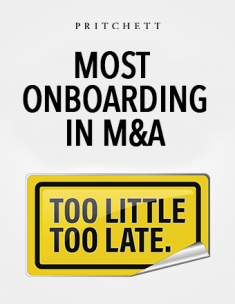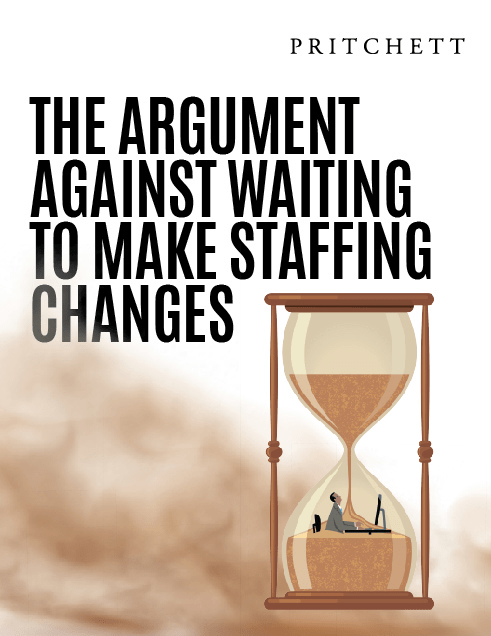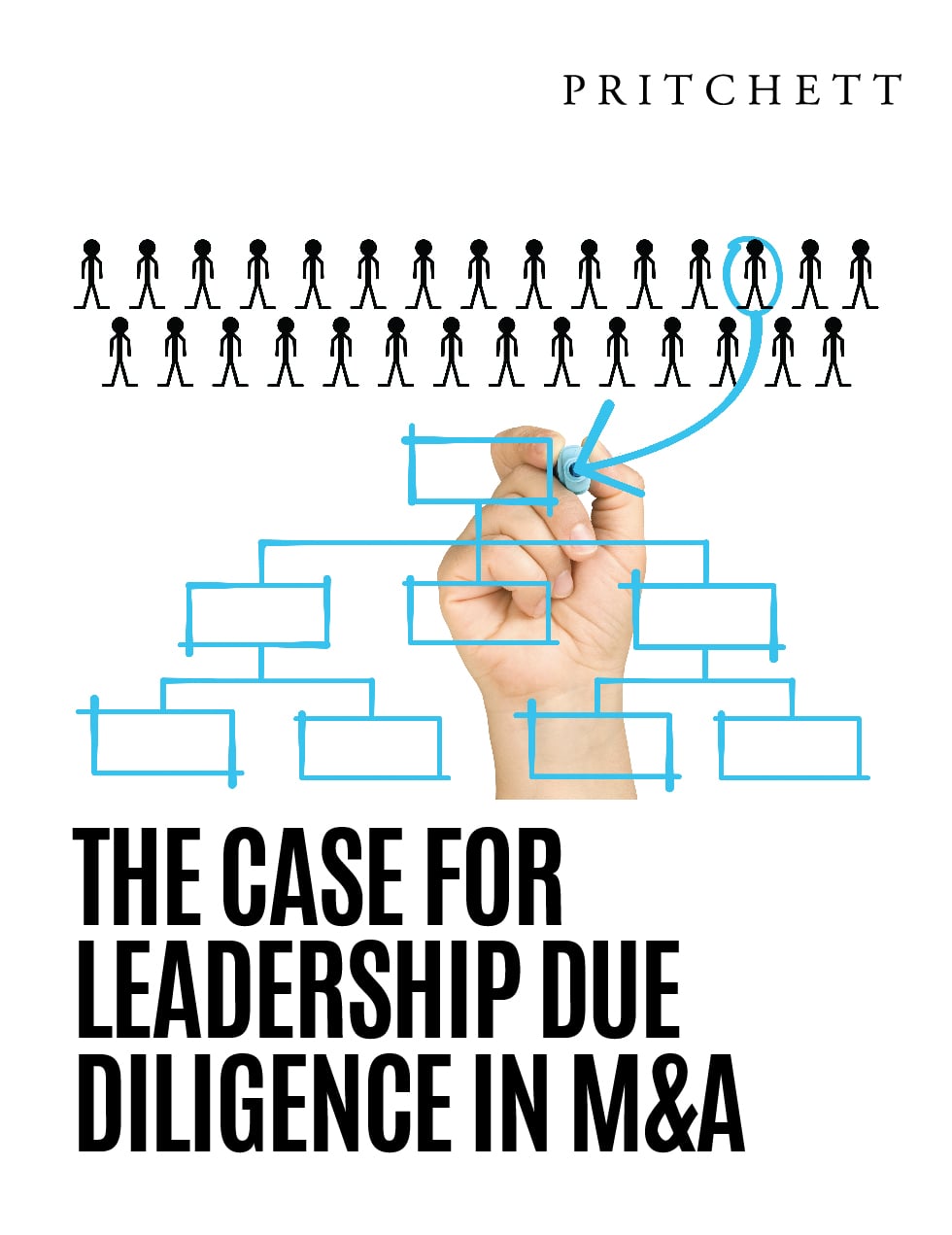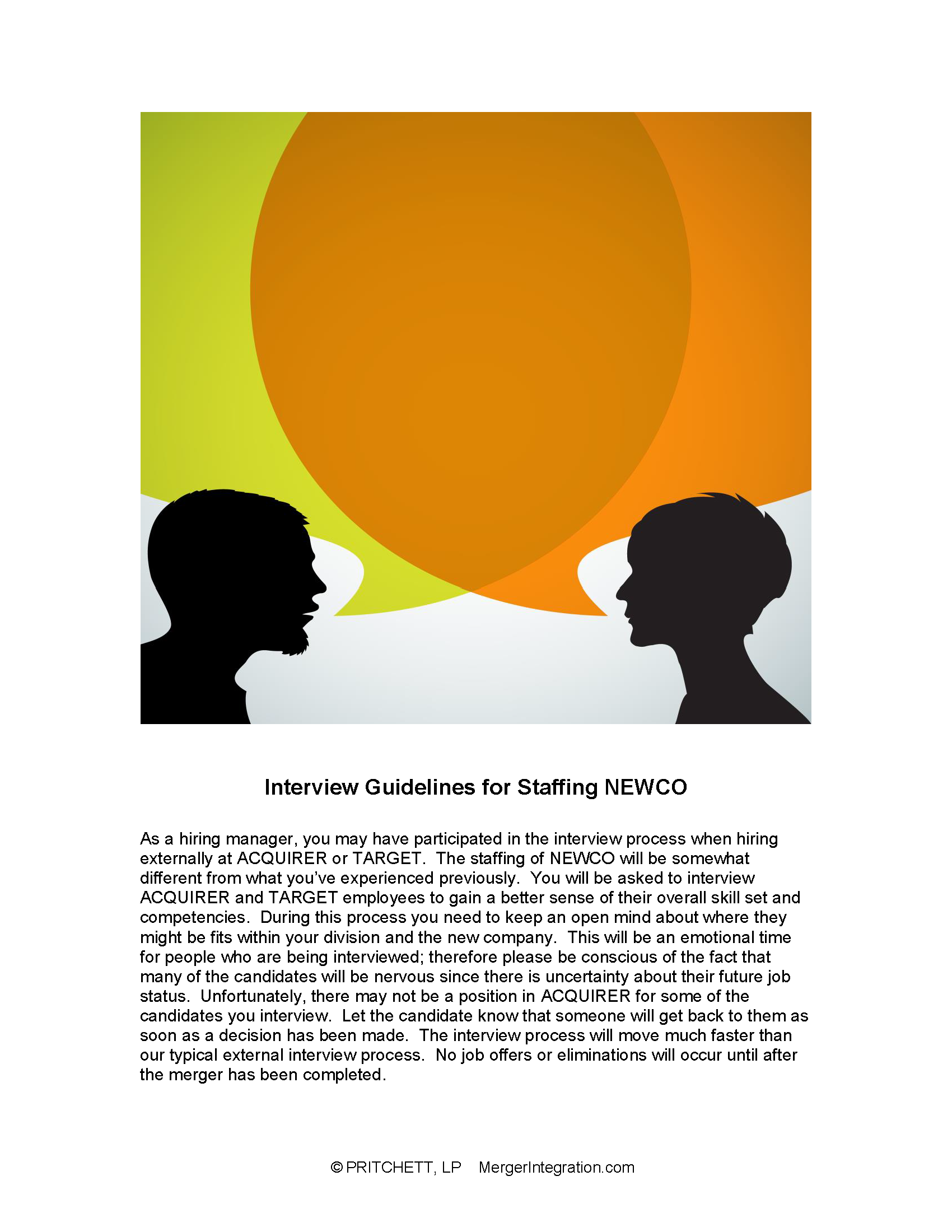Acquiring and merging a company is like hiring en masse. You spend a ton of money on the deal, and your payroll immediately explodes because of this huge new batch of employees.
But these people didn’t come looking for a job with your firm.
You need a well-crafted onboarding program to protect your investment. However, most acquirer’s assimilation efforts are too late, too little, and too poorly executed. This is a major failure in risk management.
A benchmark report on best practices found that 86 percent of some 800 organizations surveyed globally agree that it takes as much as six months for new employees to make a solid decision to stay. But 61 percent of those same organizations either (a) provide no formal onboarding program or (b) end their program within just one month.
That’s just asking for trouble. Acquired personnel can’t blend in culturally, develop a sense of belonging, and get comfortable with new work practices in a month or less.
Of course, practically all acquirers perform at least a few basic onboarding tasks. But often the acquired workforce receives little beyond a Day 1 data dump and a pile of paperwork to fill out.
The best M&A “change management program” you can implement is an extended, broad-gauged onboarding effort. Design it to transition and assimilate people into meaningful citizenship, cultural alignment, and operating effectiveness in the new organizational scheme of things. There are three key aspects to such strategic onboarding:
- Administrative tasks are the quickest, easiest, and most common aspects. They include basics such as personnel paperwork and equipping people with the gear needed to do their jobs.
- Managerial tasks are harder plus more behavioral and ambiguous—e.g., defining newcomers' work roles and performance expectations, familiarization with company processes/practices, and helping people get up to speed on the job.
- Finally, and by far the most complex, are socialization and cultural alignment tasks. Socialization tactics might include orientation sessions, a buddy system, mentoring, mixers, or training on organizational change, all shaped to help people merge into new work groups. People also should be given a cultural sense of the parent firm’s history, values, norms, and operating style.
Map out the overall design and general timetable for your strategic onboarding program well in advance. The following four-stage model depicts the focus of work along a typical integration pathway.
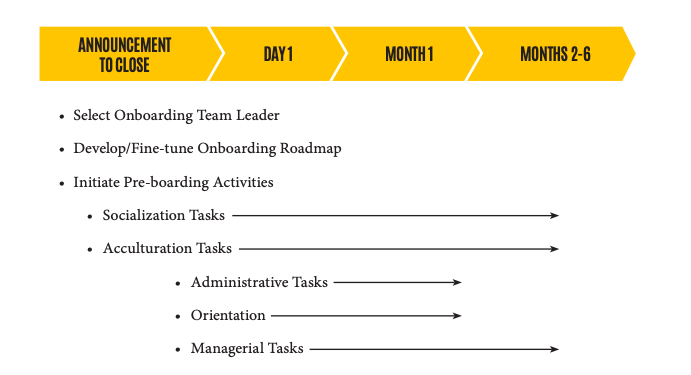
A powerful onboarding program accelerates the integration process and protects the value of your deal. The payoff shows up in retention of talent, rapid engagement, increased productivity, and cultural alignment.
That’s superb risk management.

